The Privilege of Play: Why the world’s game is a white game in the U.S.
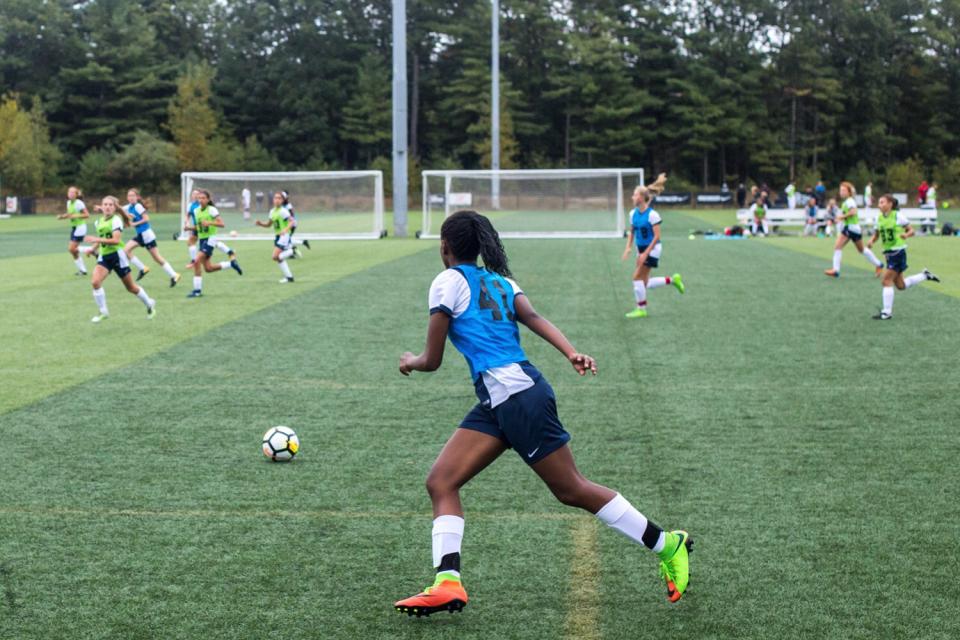
“The Privilege of Play” is a Yahoo Sports series examining the barriers minority groups face in reaching elite levels of competition in swimming, racecar driving, soccer and hockey.
----

This is a story about opportunity.
It begins in Columbia Heights, a gentrifying neighborhood in Washington D.C., where elite soccer opportunities barely exist. But several years ago, on a lively field behind a public charter school, Precious Ogu clearly deserved one.
She glided past helpless middle schoolers that afternoon, unaware of where the sport she loved could take her. She didn’t know much about high-level youth soccer; didn't know how to progress beyond after-school games. Fortunately, an onlooker did. Amir Lowery, executive director of the Open Goal Project, connected her with a travel program. Precious, the Black daughter of a Nigerian mother, showed up to try out. And she remembers being “shocked.”
She’d grown up surrounded by people of all hues, including many who looked like her. Soccer, she’d soon find, looked different.
“It was pretty much all white girls,” she says.
Soccer, in its purest form, is the most accessible and racially diverse team sport in the world. But American soccer, as Precious realized, is not. It’s disproportionately white and upper-middle-class. Doug Andreassen, the former chair of a U.S. Soccer diversity task force, recognized this decades ago. He’d look around a country home to tens of millions of non-white people. Then he’d look around soccer boardrooms, and out onto fields, and wonder: “Why doesn't soccer in America look like America?”
The superficial answer is obvious. Participation, in most cases, requires money. Soccer’s diversity problem, at its core, is a socioeconomic problem. And in America, after centuries of racial oppression – of slavery, Jim Crow laws, redlining, ongoing mass incarceration, and so much more – socioeconomic problems are race problems. In 2017, the median non-Hispanic white household owned $171,700 in net wealth; the median Black household owned $9,567. White America controls soccer, just as it controls so much else.
But the full answer is more complex. It’s rooted in a uniquely American youth sports industry built around economic and social capital. The industry fuels a sprawling soccer network that excludes minorities and perpetuates the power of those white men in charge.
“This,” Lowery says, “is systemic racism in soccer.”
‘The hidden soccer economy’
Once upon a time, soccer was a working-class sport. It still is in many countries. A century ago, it was in the United States. Early amateur teams sprung out of ethnically diverse urban areas. Semi-pro leagues came and went.
In the 1960s and 70s, however, soccer’s tectonic plates began to shift. Universities developed programs. The North American Soccer League formed and wooed foreign stars. Pelé arrived. George Best and Johan Cruyff followed. Mainstream interest in the sport percolated. Demand for youth soccer soared. But there was no infrastructure. No supply to readily meet demand.
Elsewhere around the world, supply comes from professional clubs. Most youth soccer systems exist to develop professional players. In the U.S., the NASL wasn’t financially stable enough, so a youth system had to fund itself. The burden fell to parents.
“Pay-to-play” clubs proliferated. The American system burgeoned around those who could afford it. It became an unchecked industry that exists less to develop players and more to make money for anybody who can get in on the scheme.
“The way the model is right now, the consumer seeks out soccer and buys it,” says Ed Foster-Simeon, CEO of the U.S. Soccer Foundation. And consumers who can afford it, the ones with generational wealth and disposable income, are largely white.
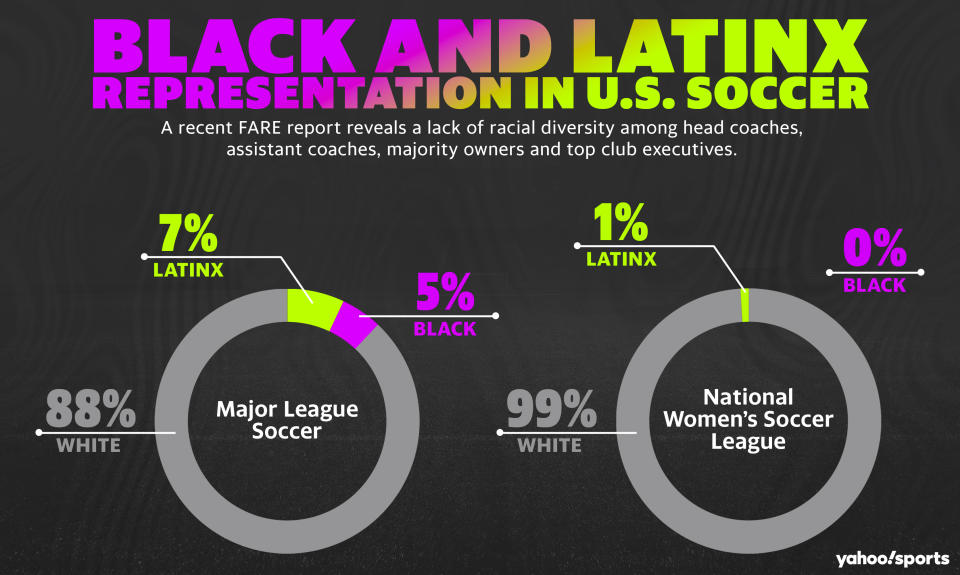
Cost, first and foremost, is the sturdiest barrier that can make soccer inaccessible. Registration fees at many top youth clubs are four figures. They’re also merely a fraction of the necessary investment. Uniforms, tournaments, equipment, transportation, camps and specialized trainers all comprise what Lowery calls “the hidden soccer economy.” Some parents report paying five figures annually. A 2019 Aspen Institute study found that youth soccer participation costs more on average than youth tackle football participation, and more than twice as much as youth flag football participation. For many Black families, who on average make $26,416 less than non-Hispanic white families, those prices can be prohibitive.
“There's so much untapped potential in these communities. But if it costs $1,500, 2-grand a year for a 12-year-old to play soccer, well that's just not feasible for a large number of people,” says Brandon Miller, a goalkeeper for the United Soccer League’s Charlotte Independence who co-founded the USL Black Players Alliance.
Adds Hugh Roberts, a Charlotte defender and fellow co-founder: “If you don't have any money, from the start, as a youth, then your opportunities are slim to none.”
The increasingly common solution has been scholarships. Many elite clubs now waive fees for underprivileged kids, or fully fund their eldest teams. But “scholarships are not the answer,” Andreassen says. Others agree. Former U.S. Soccer president Sunil Gulati points out that some clubs essentially subsidize scholarships by charging more in younger age groups.
“It's a taxation of a broad base,” he explains.
And while it chips away at one barrier, it neglects many others.
Soccer is geographically inaccessible
The parents who could pay lived in suburbs. The industry, therefore, grew in suburbia. And for talented teens like Precious Ogu, that’s problematic. The nearest elite club is 45 minutes away. Practices begin at 8:30 p.m. on weekdays. Her single mother works nights and doesn’t drive. No teammates live nearby.
The pipeline isn’t just economically inaccessible. It’s geographically inaccessible as well. Yahoo Sports analyzed the locations of 161 elite youth clubs that comprised U.S. Soccer’s Development Academy. In 2010, the average median household income of the ZIP codes in which those 161 clubs are based was $80,950 – more than $30,000 above the nationwide median at the time, and the equivalent of around $96,400 today. Some of the best American soccer players ever grew up hours away from a club that could offer valuable coaching and access to showcase events. Their parents shuttled them to and fro. But for every parent that could, there are many that can’t.
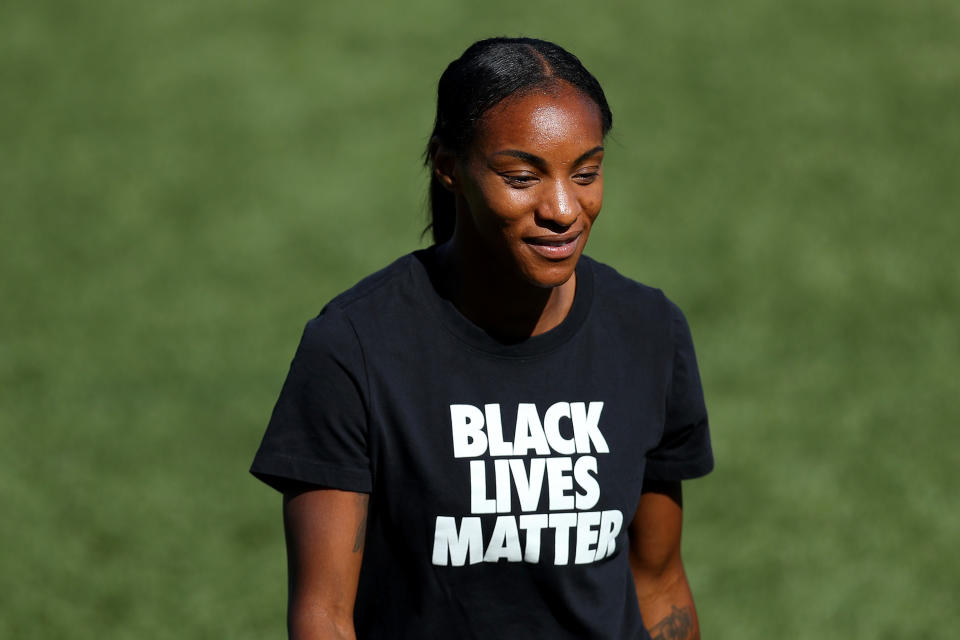
Time is a resource. Schedule flexibility is an offshoot of socioeconomic class. “I think about when I was the president of a [Virginia youth] club in the ‘90s,” Foster-Simeon says. Parents who volunteered were “white-collar workers who could say to their boss, ‘I'm leaving early on Tuesday and Thursday 'cause I'm coaching my kid's team.’ If you're an hourly wage worker, you don't have that kind of flexibility.”
For Precious, the only solution is Uber. Open Goal, a non-profit aiming to bring soccer to underserved communities, funds her travels. Many kids without similar support simply can’t play.
“These are the invisible barriers that have taken too long for us to recognize and address,” Foster-Simeon says. “There are structural and historical barriers to participation.”
They largely affect poor families in inner cities. And poor families in inner cities are disproportionately families of color.
Reciprocally, Black people are underrepresented in 132 of those 161 ZIP codes housing Academy clubs. Those who do grow up in suburbs, like USWNT star Crystal Dunn, are often the only Black players on youth teams. Those raised in cities often aren’t able to latch onto the game.
“If I had stayed actually in the city,” Dunn said on a recent panel, “there’s a good chance I wouldn’t even be playing this sport.”
Cultural barriers: ‘I felt like I just didn't fit in’
Precious sometimes returns home from practice after 11 p.m., with homework still to do. She wakes up the next morning before 7 a.m. She still maintains straight-As. And she’s excelling on the soccer pitch. Division I colleges have been in touch. She initially worried she couldn’t compete with the suburban girls, then quickly realized she absolutely could.
But along the way, she encountered another type of barrier. On the field, she adapted quickly. Off it, she wondered: “How am I gonna make friends?” Most of her new teammates went to private school. They were nice, but talked about private school things. About lake houses, fancy restaurants.
“I would be scared to approach any of them, or try to start a conversation,” Precious says. “I didn’t really know how. Like, what are we gonna talk about?
“At first, I was kind of uncomfortable, because I felt like an outcast in some way. I felt like I just didn't fit in.”
This, to Foster-Simeon, is the “overlooked” puzzle piece. “You can create a great opportunity for a kid in a middle-class, suburban club,” he says. “But if you've not spent any time thinking about what that means to that child culturally, coming from a community where they don't have many resources,” then the child can struggle. They experience microaggressions. They can’t partake in conversations about iPads and exotic vacation spots. Elite clubs, in this sense, can be culturally inaccessible too.
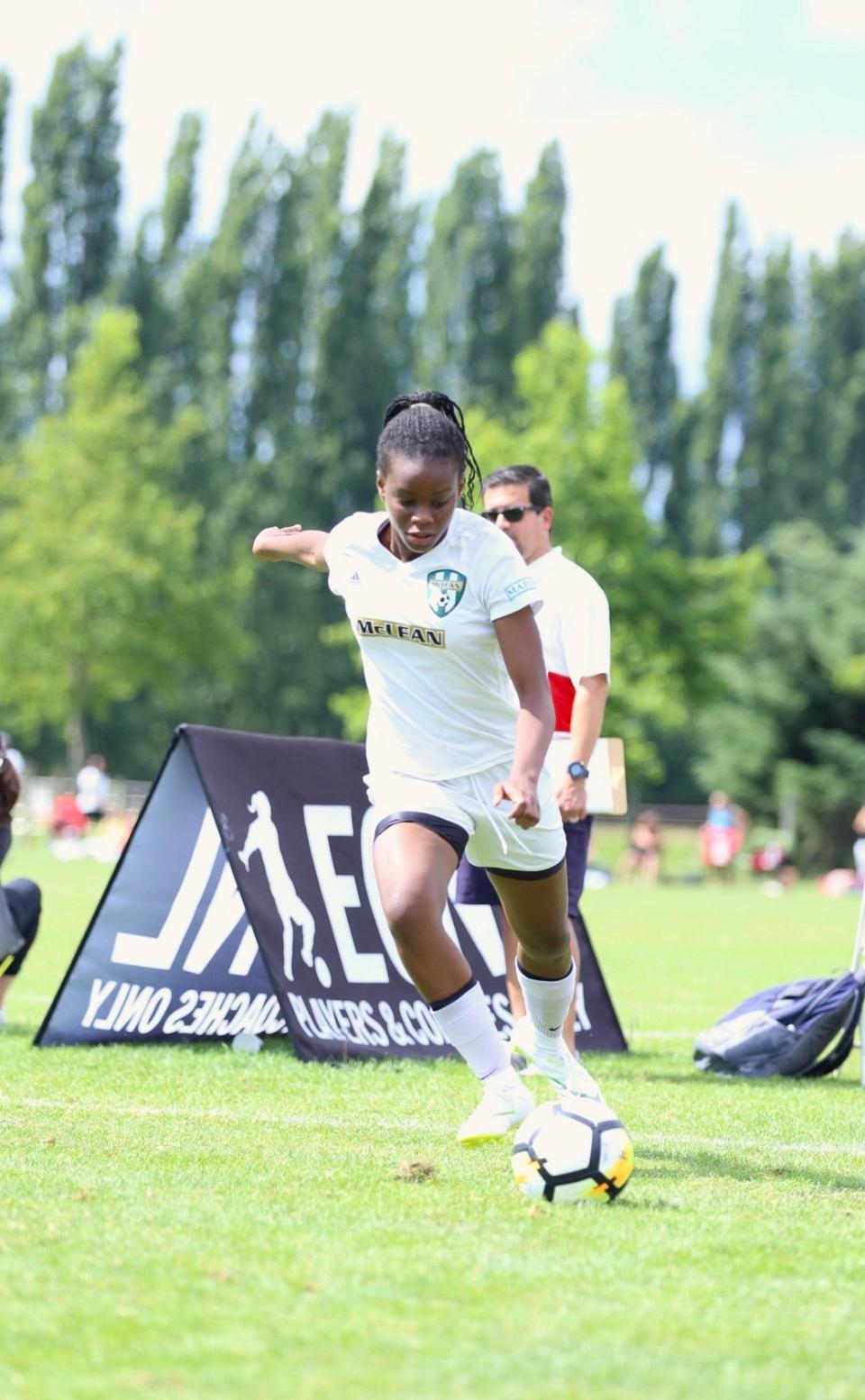
Especially, players of color say, because many white coaches don’t understand this cultural divide. They can’t understand poverty and the mental challenges that accompany it. Roberts, the USL defender, grew up with Black and Latino teammates. He remembers a coach benching a few “because of their attitude.”
“But he's not understanding that my friends are struggling at home, because they're not getting enough food,” Roberts says. “They're frustrated with school and stuff. And yes, we take it to the field, but it's never us disrespecting a coach. But sometimes coaches just don't understand us – because they're not us.”
So barriers beget more barriers, and keep one another in place. A predominantly white system produced overwhelmingly white leaders. A recent FARE report found that across Major League Soccer, out of 229 head coaches, assistant coaches, majority owners and top club executives, 7.4% are Black; 5% are Latinx; and 87.6% are white. In the National Women’s Soccer League, the corresponding numbers are 0%; 1.1%; and 98.9%. The report’s authors called the findings “alarming.” Black players’ coalitions have formed in MLS and the USL to, among many other things, correct the imbalance.
Representation is often valued for its inspirational faculties, and with good reason. Humans gravitate toward role models who look like themselves.
“I played basketball [growing up], all my friends played other sports,” Roberts says. “Subconsciously, you don't even give soccer the attention, because there's no people who look like you.”
But representation is also about diversity of perspectives.
“The people that are making the power decisions,” Miller says, “don't have diverse views, and therefore don't make diverse decisions.”
The people in charge of fixing flawed systems are the very people whom those systems benefit.
What’s being done to address soccer’s inequities
When Lowery and Simon Landau, the Open Goal Project’s founders, first set out to address soccer’s inequities, they attacked from within. They raised money. They covered club fees and arranged transportation. They took kids from underserved communities out into the ’burbs, to the preeminent travel teams, to play for respected coaches and in front of college recruiters. They filled any gaps that arose.
But if you mention that strategy to Lowery now, having seen the industry’s underbelly, and having seen all the concealed barriers it presents, he might cut you off.
“No! Nooo! Noooo, nooo, nooo,” he says. “It's so wrong.”
Many who’ve confronted these issues, who’ve gone into neglected communities, who’ve analyzed the barriers first-hand, now advocate for a fresh approach. Rather than jam underprivileged kids into the pipeline, their solution is to create a different pipeline. Rather than bring the kids to soccer resources, the solution is to bring soccer resources to them.
It starts on ground floors. Soccer, Foster-Simeon points out, “is a relatively low-cost sport when you pare it back to its basics.” But so often, even some basics aren’t present. An early-2000s NIH study found that 69.6% of Black neighborhoods and 81.4% of Hispanic neighborhoods didn’t have a single recreational facility.
So Foster-Simeon’s U.S. Soccer Foundation decided to build some. They’ve committed to funding 1,000 “mini-pitches,” or inner-city courts that serve as soccer havens. They offer kids an introduction to the game that’s so often elusive.
And rather than swoop in or dictate from afar, Foster-Simeon says, “it's sort of like a collaborative effort.” The Foundation doesn’t solve problems for inner-city kids. It works with people who already know the inner-cities, who intimately understand their challenges. It leverages existing infrastructure and trust. “We identify community-based organizations,” Foster-Simeon says. “And we provide them with the curriculum and training and other supports that they need to be able to offer programming to the kids. [We] give them the tools that they need to create access and opportunity.”
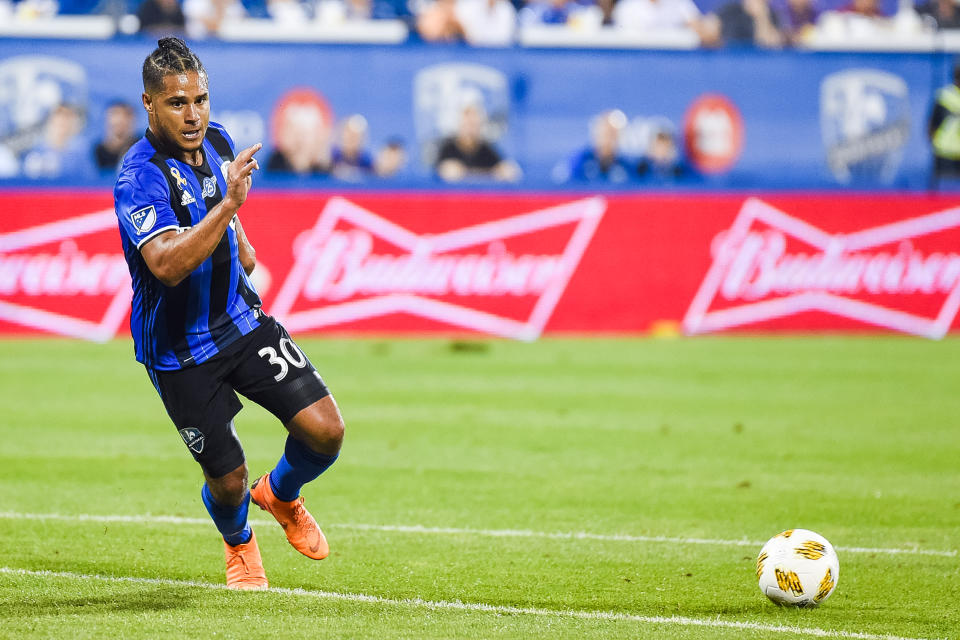
Open Goal, meanwhile, brought all its efforts in-house. It launched its own inner-city club, which is completely free for players. It runs its own camps, and clinics, and nutrition programs, and fitness training. The plan requires aggressive fundraising and networking. It may or may not be replicable across the country, at scale. Lowery and Landau feel it’s the only sustainable way forward. “The system has to be there in their communities,” Lowery says of underserved kids. “Just like it's in everyone else’s community.”
Over time, more and more Black and brown players will push through the system, or earn their way in from outside. More and more will attempt to reform it. “I made it all the way to the other side,” says MLS veteran Quincy Amarikwa, a co-founder of the Black Players for Change coalition. “I understand how I was perceived the entire way, I understand how people spoke about me as I went through, I understand why they did the things they did, and how they went about doing it. Because that's how they maintain the system. So now that I have that understanding, I can now relay the message back to those who may be in the middle of it, who might be going into it, or who actually have the best intentions to address and fix it, and update it, for the betterment of everybody else.”
But widespread reform is a gargantuan task. Barriers are fortified. “The system, thus far, has been monopolized by entities who say that we can only do it one way,” Lowery says. “You can only get to college one way, you can only be a professional one way, and it has to be through the academy system, and you have to do X, Y, Z. That's all entrenched in the system. It's systemic racism, right?”
Precious understood very little about it when she first trekked out to suburbia for practices a few years ago. The cultural and socioeconomic divides, she remembers, sparked an awakening. She’s realized, in years since, that “where a kid grew up, and their financial situation, can be a huge barrier on their sports career.”
But why? Precious wondered. Now a senior, her high school tasked her with finding a topic for her senior project. A research prompt to investigate throughout the year.
Hers, she says, will be “about why sports aren't diverse, and how it affects people of color like me.”

